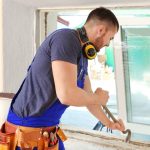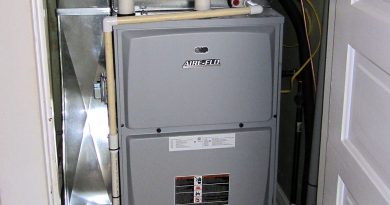[Blog] The Environmental Benefits of Restoring Old Homes
Energy Disrupter

The sustainability movement has swept across the construction industry. Green homebuilding has grown in favor because of its health benefits, energy savings and aesthetics. Therefore, it should be no surprise that retrofitting existing homes into sustainable properties can create even more value for clients.
You may have reservations about upgrading old houses to fit green standards, but trust in the advantages. Conserving energy allows for lower bills, which means happy clients. Plus, improving the energy efficiency of existing properties can revitalize a community while protecting its history. You can make easy work of restoring an old home to suit contemporary codes — all without diminishing the style or feel.
Simple Energy Solutions
Transforming an older home into a sustainable utopia doesn’t always require a massive facelift. Homeowners will be relieved to learn the best improvements happen on a small scale but still make a dent in saving energy and money.
The average household spends $3,836 per year on utilities, fuel and public services. You can imagine how this number increases for older homes, which possess numerous air infiltration spots. Simple steps have a significant impact. Improving the weatherstripping on doors and windows prevents expensive air leaks, for example.
Similarly, lighting accounts for 5% of the energy budget within the average home. Many homeowners have gotten the ball rolling on LEDs and CFLs, which last longer than incandescent bulbs. Changing your client’s insulation, water heater and light fixtures will create a better home without altering the existing structure.
Opportunities for Renewable Energy
Look into installing renewable energy solutions like solar panels if clients are open to broader projects. This technology has existed for decades, but recent price drops have prompted homeowners and businesses to jump on the opportunity. Wind and solar power are now cheaper than coal for most industries, and tax credits provide additional incentives to switch.
Wind energy and hydropower are less prevalent options, but they’re useful for property owners. Some homeowners have installed downsized wind turbines on their properties. Alternatively, people living close to streams or rivers have directed these water sources into turbines to power their homes.
Geothermal heat pumps and tankless water heaters provide other sustainable ways to heat water without burning up energy bills. Installation is compatible with many older homes and won’t harm existing components. Plus, tankless heaters are smaller than conventional units yet more efficient.
Sustainable Materials Maintain Integrity
Many older homes require extra care when renovating to avoid compromising integrity. The goal is to preserve the home’s aesthetic value while improving the functionality for modern-day use. This is especially important for historic sites with stricter building codes.
Suggest building materials with their own history rather than moving to newly constructed or modern finishes. Sustainably sourced wood certified by the Forest Stewardship Council is now the most frequently specified green building material, for example. Recycled or reclaimed features can further reduce the environmental impact of a remodel.
Historic windows are another home feature that requires some consideration. Many home contractors are reluctant to remove old windows or cut holes for new ones. In this case, use caulk, weatherstripping and storm windows to stop air leakage. This can keep windows energy-efficient without sacrificing the property’s history.
Carbon-Neutral Possibilities
Making the switch to a carbon-neutral home allows for a cleaner energy grid. Businesses and homes are discovering ways to integrate renewable energy into the existing housing stock. Introducing renewable energy sources will diminish the need for fossil fuel usage, shrinking your clients’ carbon footprint.
Harvard shrunk its carbon output with the HouseZero project, which involved retrofitting a 1940s building to suit modern energy standards. The house relies on 100% natural ventilation and daylight and amounts to zero carbon emissions. Harvard researchers created this project to show that restoring old buildings contributes to sustainability as much as constructing new ones.
Create Green Homes With Old Charm
Join the wave of green retrofitting by starting slow and working your way up to more intensive projects. Homeowners appreciate every cent they can save, and many are eager to try sustainable improvements. Every small step contributes to the greater good of the planet and its ecosystems.
Holly Welles is a freelance writer with a focus on construction and real estate. Her work has been published on Construction Executive, CADdetails and other industry websites. She’s also the editor of The Estate Update.
















